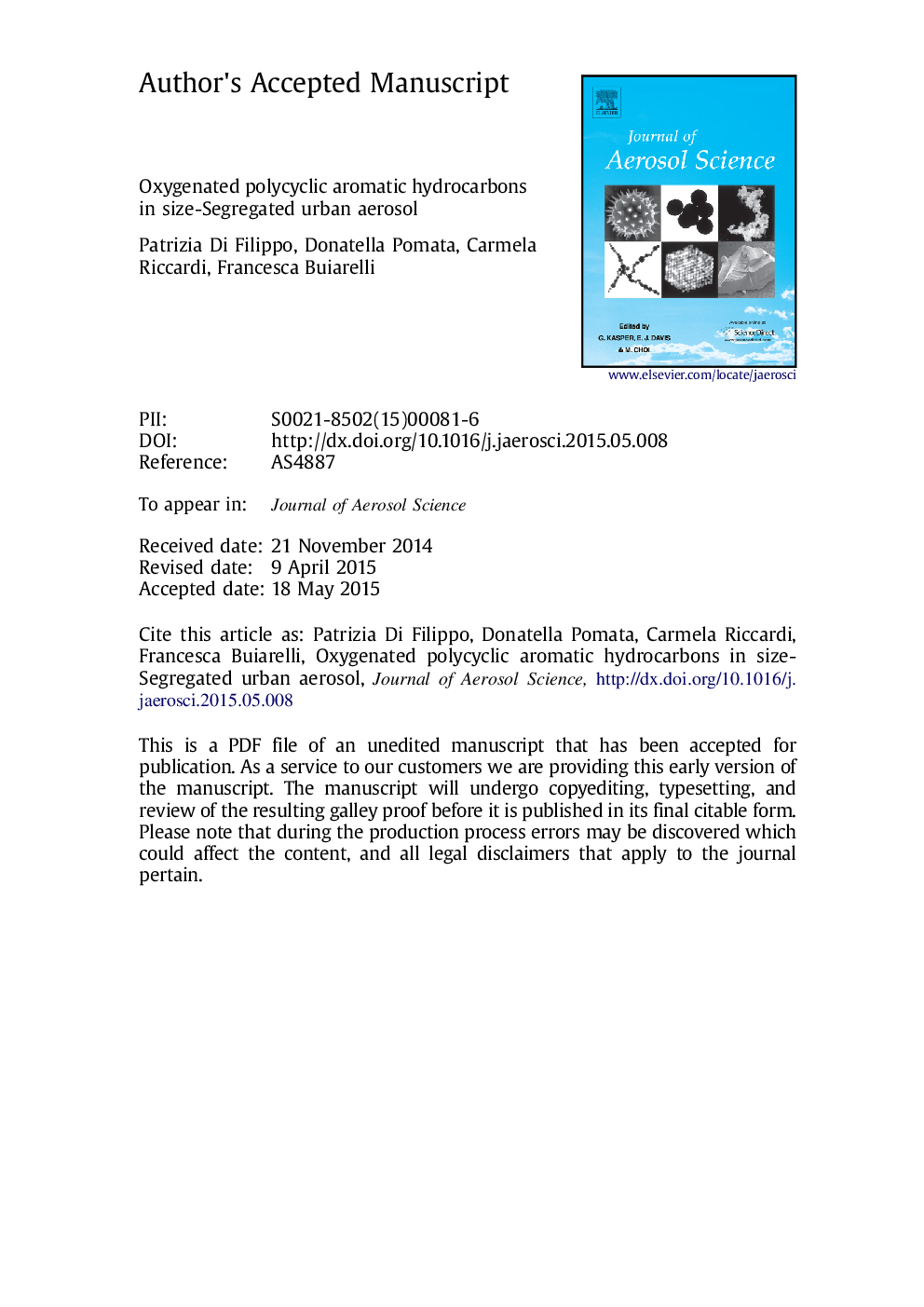| Article ID | Journal | Published Year | Pages | File Type |
|---|---|---|---|---|
| 6344477 | Journal of Aerosol Science | 2015 | 25 Pages |
Abstract
Oxygenated polycyclic aromatic hydrocarbons are toxicologically relevant pollutants to both humans and environment, identified in urban aerosols, coming from both direct emissions, and heterogeneous reactions in atmosphere. In this paper, 7H-benz[de]anthracene-7-one, benz[a]anthracene-7,12-dione and benzo[a]fluoren-11-one concentrations were studied in size-segregated atmospheric particles collected in Rome, Italy, over one year. The relevant concentration of oxy-PAHs (as sum of three compounds), found in the warmer season (2.1 ng mâ3), was higher than both polycyclic aromatic hydrocarbon (as sum of fourteen PAHs) and their nitro-derivative (as sum of ten nitro-PAHs) concentrations in the same samples (respectively 1.31 and 0.07 ng mâ3). The warmer season is also characterized by oxy-PAH higher concentration in the ultrafine fraction of the aerosol (0.74 ng mâ3) when compared to the same fraction in winter and intermediate seasons (0.22 and 0.09 ng mâ3, respectively). Due to oxy-PAH major distribution in particles capable to reach the human target organs, these results suggest an important role for oxy-PAHs in the air direct-acting mutagenicity, in urban sites, in summer.
Related Topics
Physical Sciences and Engineering
Earth and Planetary Sciences
Atmospheric Science
Authors
Patrizia Di Filippo, Donatella Pomata, Carmela Riccardi, Francesca Buiarelli, Valentina Gallo,
